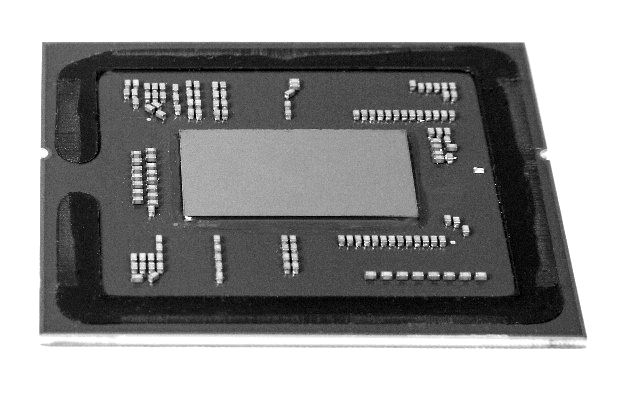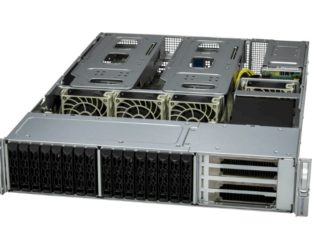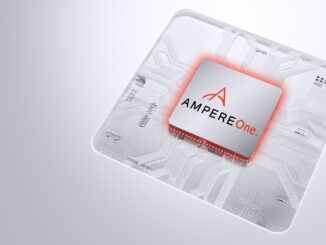
The gatekeeper to Arm in the datacenter has finally swung that gate wide open.
Red Hat has always been a vocal support of Arm’s efforts to migrate its low-power architecture into the datacenter. The largest distributer of commercial Linux has spent years working with other tech vendors and industry groups like Linaro to build an ecosystem of hardware and software makers to support Arm systems-on-a-chip (SoCs) in servers and to build standards and policies for products that are powered by the chips. The company was a key player in the development of the Arm Server Base System Architecture (SBSA) specification that gave OEMs and ODMs a framework for building datacenter systems powered by the Arm architecture.
The software make also has leveraged Arm-based servers in open source projects like its Fedora Linux development release – the foundation of its commercial Red Hat Enterprise Linux stack – has a quasi-commercial edition of Red Hat Linux that runs on Arm and is continuing to bring Arm support to an array of its own offers, such has its distribution of Ceph, an open source object storage platform. In 2015, the company rolled out the Development Preview of the operating system with support for Arm’s Armv8-A 64-bit architecture.
Despite all this, what Red Hat hadn’t produced is a Red Hat Enterprise Linux that fully supports the Arm architecture the same way it does Intel’s Xeon chips and IBM’s Power processors. That is, until now. At the SC17 supercomputing conference in Denver, the commercial Linux distributor announced Red Hat Enterprise Linux 7.4 for Arm, an OS that fully supports the Arm architecture. The move brings a top-tier enterprise OS into the Arm ecosystem and continues the recent accelerated momentum behind the Arm-in-server efforts. That has included Qualcomm’s rollout this month of its long-awaited Centriq 2400 Arm-based server SoC that is aimed at hyperscalers and cloud providers and, at the conference, Cray’s announcement that it is adding Cavium’s ThunderX2 SoC to the newest of its XC50 family of supercomputers and HPE’s unveiling of the Apollo 70, the company’s first HPC system based on the Arm architecture (also using the ThunderX2). Now Red Hat has out with full Arm support in its Linux OS. The release notes can be found here.
Along with the version of RHEL for Arm, Red Hat also started shipping Red Hat Software Collection 3, Red Hat Developer Toolset 7 and single-host KVM virtualization – as an unsupported Development preview – for the architecture. Future versions will include support for such technologies as containers, OpenStack and the Ceph open source storage platform.
There are a number of reasons why now was the time for Red Hat to release a full RHEL release for Arm, according to Jon Masters, chief Arm architect for Red Hat, and Yan Fisher, product marketing lead for the vendor’s Hyperscale Platforms and Technical Computing unit. The industry has reached a tipping point with such moves as the release of Centriq and HPE’s Apollo 70 server and the development of more robust two-socket solutions for the architecture. In addition, the Development Preview had been out for more than two years and customers made their demands for the OS clear. The company also had been working for the past seven years – it first started its Arm efforts in March 2011 – on building out the ecosystem and standards for Arm server SoCs and the systems they power.
“People ask why’s it taken so long for the Arm to happen, and they forget how long it takes for a new architecture to get adopted,” Master tells The Next Platform. “It’s always a ten year journey.”
Red Hat’s OS supports ten different SoC implementations of the Arm architecture, including Centriq, ThunderX 1 and 2 and all three versions of X-Gene, the architecture started by Applied Micro, which in less than a year was bought by Macom, which turned around and sold Applied Micro’s compute business – which included X-Gene – last month to a new entity called Project Denver Holdings and created by capital venture firm The Carlyle Group. There also are other Arm implementations that Masters and Fisher declined to name. However, the RHEL for Arm OS will run on all of them.
The support for Arm also is part of a larger multi-architectural strategy that Red Hat has been talking about for several months. The idea is that in a fast-evolving datacenter environment with new modern workloads emerging, the number of chip architectures that will find their way into the datacenter will grow. Intel is the dominant player in the server chip market, but OEMs and customers are demand viable alternatives, and competition to be the top option has grown. Not only is Arm in the mix, but so is IBM with its Power architecture and OpenPower initiative and AMD with its X86 EPYC server chips that are built on its Zen architecture. Red Hat’s plan is to support all the major architectures with its RHEL OS and other software and tools. A week before rolling out RHEL for Arm, Red Hat announced RHEL 7.4 for Power Little Endian (both Power8 and Power9), the latest version of IBM’s Linux platform for its Power systems.
“The industry has realized that the greater innovation that they’ve seen coming out of our traditional established players is just no longer there, and they have to innovate on their own or they have to look for alternative ways to get this performance because businesses are growing, the compute problems are growing [and] the data sets are growing,” Fisher tells The Next Platform.
Moore’s Law, which has been the driving factor behind chip and system innovation for more than 50 years, is losing steam, and workloads are changing, both trends that are opening up opportunities for other chip makers to gain traction in the market with differentiated products, Masters said, pointing to numbers touted by HPE and Qualcomm that indicate that newer Arm-based SoCs are close to offering performance parity with Intel chips while improving such metrics as cost, power efficiency and memory bandwidth.





It was already open. SUSE HAS arm running for quite some time with SLES12..